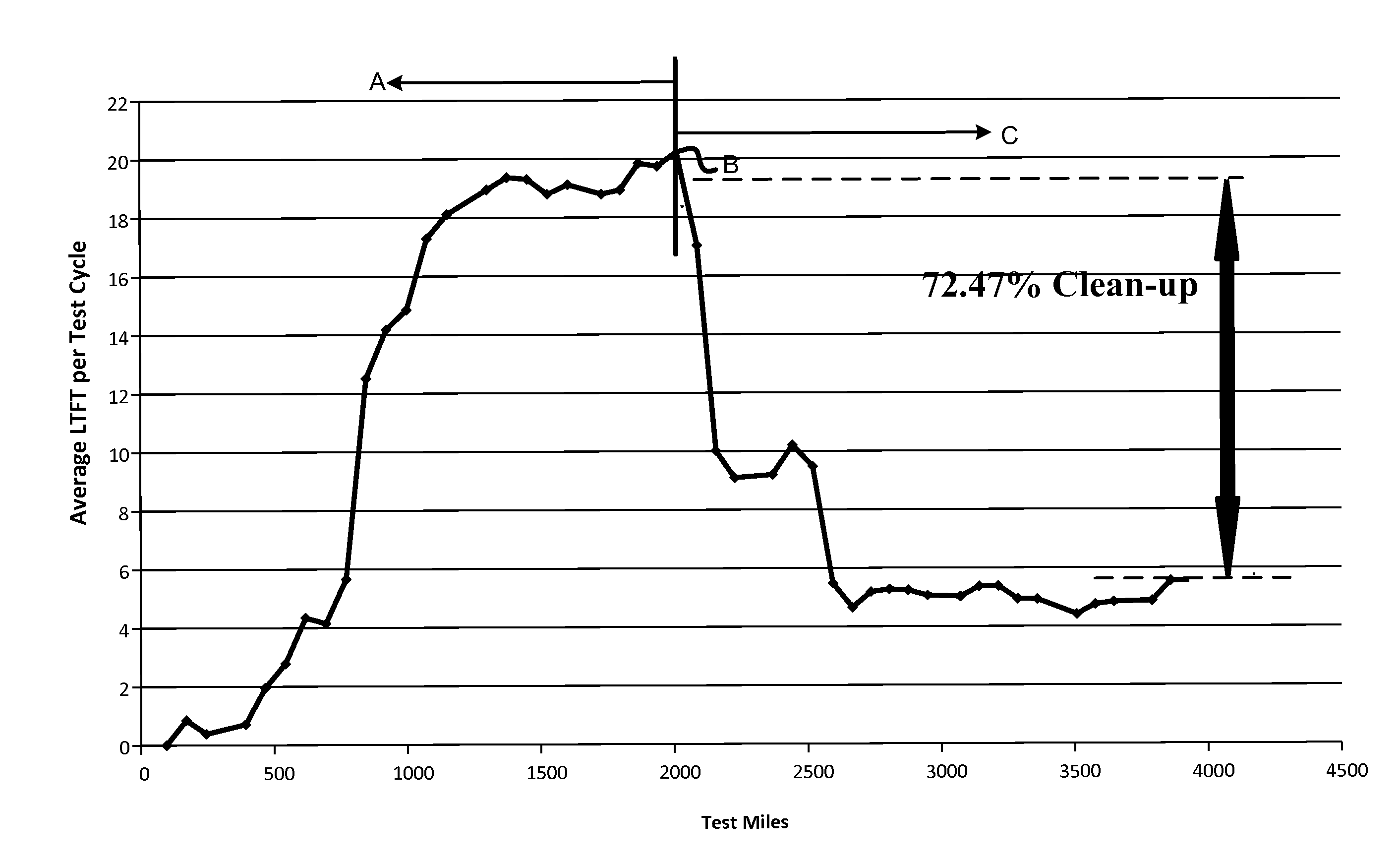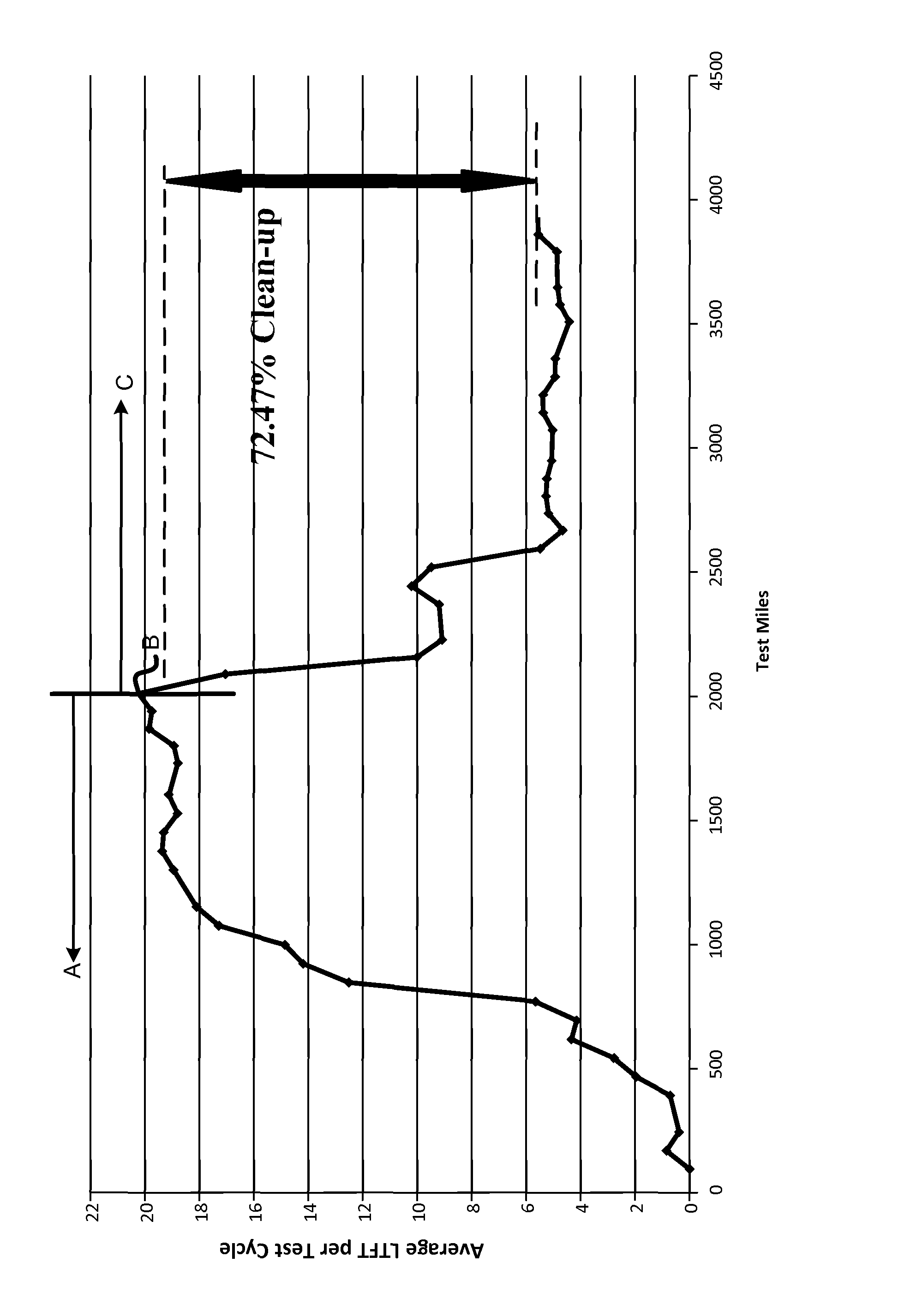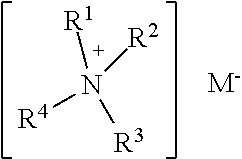Fuel additive for improved performance in direct fuel injected engines
a technology of direct fuel injection and additives, which is applied in the direction of fuel additives, liquid carbonaceous fuels, petroleum industry, etc., can solve the problems that mannich dispersants used in port fuel injected gasoline engines cannot provide suitable improvement in direct fuel injection gasoline engines, and the dispersants that could have been used for direct fuel injection engines are not necessarily effective for cleaning up direct fuel injection engines. achieve the effects of enhancing acceleration, reducing emissions, and maximizing fuel economy
- Summary
- Abstract
- Description
- Claims
- Application Information
AI Technical Summary
Benefits of technology
Problems solved by technology
Method used
Image
Examples
##ventive example 1
Inventive Example 1
(C8)3NMe
[0072]Trioctylmethylammonium chloride (70 grams) was mixed with 130 grams of heptane. The mixture was extracted five times with 70 grams of sodium acetate (about 16% wt. in water). Volatiles from the resulting organic layer were removed under reduced pressure to give a quat acetate. FTIR showed strong peaks at 1578 and 1389 cm−1, characteristic of a carboxylate salt.
##ventive example 2
Inventive Example 2
(C12)2NMe2
[0073]A commercial quaternary ammonium product 2C12NMe2+NO2− was vacuum distilled to remove volatiles to give the desired product.
##ventive example 3
Inventive Example 3
C18NMe2-E6
[0074]A mixture of C18—N-Me2 (118 g), 39 grams of 1,2-epoxyhexane, 26 grams of acetic acid, and 76 grams of 2-ethylhexanol were heated slowly to 90° C. under inert atmosphere. The mixture was heated at 90° C. for 1.5 hours. Volatiles were then removed under reduced pressure to give desired product.
PUM
| Property | Measurement | Unit |
|---|---|---|
| temperature | aaaaa | aaaaa |
| pKa | aaaaa | aaaaa |
| pKa | aaaaa | aaaaa |
Abstract
Description
Claims
Application Information
 Login to View More
Login to View More - R&D
- Intellectual Property
- Life Sciences
- Materials
- Tech Scout
- Unparalleled Data Quality
- Higher Quality Content
- 60% Fewer Hallucinations
Browse by: Latest US Patents, China's latest patents, Technical Efficacy Thesaurus, Application Domain, Technology Topic, Popular Technical Reports.
© 2025 PatSnap. All rights reserved.Legal|Privacy policy|Modern Slavery Act Transparency Statement|Sitemap|About US| Contact US: help@patsnap.com



